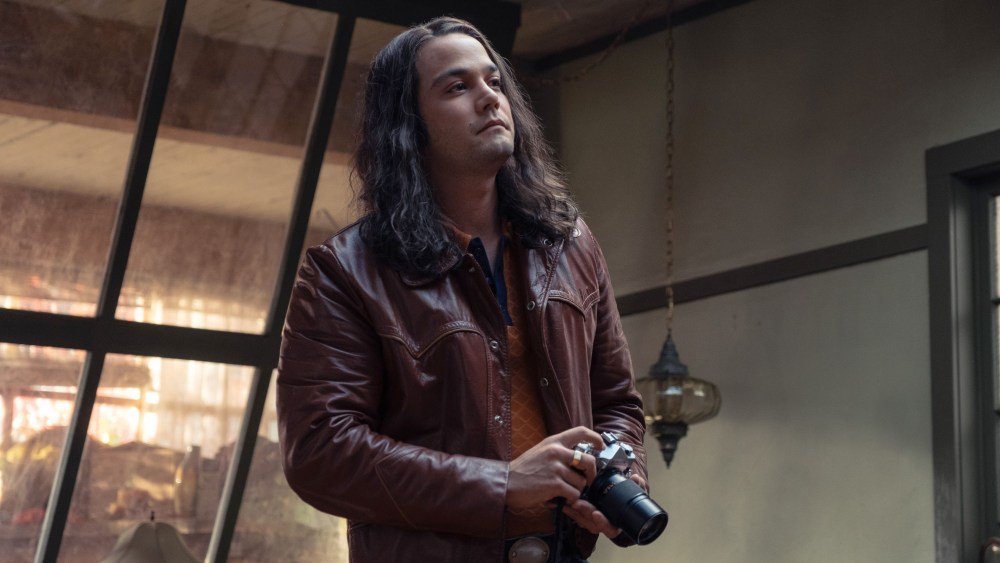‘Woman of the Hour’ Team on Showing Rodney Alcala’s Violent Murders
SPOILER ALERT: This story contains mild spoilers for “Woman of the Hour,” now streaming on Netflix.
“Woman of the Hour” screenwriter Ian McDonald faced a unique challenge with his sophomore feature: Tell a true crime story that felt “necessary and useful.” Luckily, the stranger-than-fiction story of Rodney Alcala, who won “The Dating Game” during a 1978 appearance amid a serial killing spree, was ripe for examination.
“There’s a lot out there where a serial killer attacks a bunch of women, and there’s absolutely no reason to tell it,” McDonald says. “There was something about this that felt like it could be socially and culturally relevant now. You’ll sometimes hear people say, ‘Rodney’s kind of like Ted Bundy,’ by which I think they mean he’s handsome and well-educated. But he was actually very different: He was a chameleon. He was good at pretending he was something he wasn’t. That’s exactly what I found interesting, because it was the culture that routinely looked the other way, and that enabled him.”
Directed by Anna Kendrick, who also stars as Cheryl, an actress who picks Alcala to win the game show, the film debuted to acclaim at the 2023 Toronto International Film Festival and premiered on Netflix on Oct. 18. Days later, it’s sitting at the top of the streaming service’s most-watched film list, which could be a testament to a compelling tale mixed with unconventional storytelling.
McDonald says that one important element of crafting the script was narrowing down which victim interactions he wanted to portray, given that Alcala may have killed up to 130 people.
“That was the thing that changed the most throughout developing this,” he says. “It was less about ‘Which victim do we want to write about in terms of the person?’ and more that how you open and close a movie says so much about the film’s intentions thematically, and has a massive dramatic impact. You can do it chronologically, where you start with his earliest murder, and then move to his most recent. You can do it thematically and find specific events that you feel build upon each other in a revealing way, or based around character. How does each crime reveal something new about the killer? It was a cross between those last two — that’s kind of where we landed.”

Screenwriter Ian McDonald
While recreating the murders, McDonald and Kendrick are intentional about not showing a gratuitous amount of violence, but also not sanitizing McDonald’s horrific crimes.
“Any of the moments of violence were something I really agonized over because this is not [David Fincher’s influential 1995 crime thriller] ‘Seven.’ I love ‘Seven,’ but in this movie, simply by virtue of it being a true crime story, you operate with the knowledge that these were real people,” he says. “They had families and their worlds were taken from them. You want to make sure that you’re doing it in a way that responsibly reveals the killer for what he was, and that accurately reflects the darkness that he represents without being gratuitous. It’s a tough line to walk, but it was something I took very seriously. There was a lot of, ‘Add that line, cut that line’ — trimming and moving around just to make sure that the story was all there.”
That empathy for the victims also reverberated through the script’s point of view, as characters engage with Alcala’s increasingly sinister nice-guy act. One standout scene — in which Cheryl leaves a bar with Alcala and then walks away as he casually stalks behind her — was written with empathy by McDonald.
“Men find themselves in compromising situations too, usually with other men,” he says. “You know when things suddenly feel awkward and uncomfortable, and maybe threatening. I’ve been in some spooky situations, and so on that level, I was able to draw somewhat from my personal experience. But it’s also not the same, because I’m 6’1”, 200 pounds. It’s definitionally always going to be different. At that point, it comes down to just listening. In the very early stages of writing this, I reached out to a bunch of female friends and I said, “Hey, can we get lunch? Can you tell me stories about your experiences where you would go on a date and it would feel threatening or upsetting? What did that actually look like?” That’s something that continued to be finessed over the course of the development of the script.”
Beyond that engagement, McDonald says Kendrick was also an active participant in exploring the film’s themes with him.
“There was one scene between the hitchhiker and Rodney,” McDonald says. “Anna looked at the script and said, ‘I really like that you’re writing her with so much agency, but you need to give her less, because right now she’s being really forthright and kind of combative with him. The truth is we have to do this little dance where we are polite and we placate, but without contradicting them.’ At that point, you just listen to people who have experiences you don’t, and try to be honest and make sure it finds its way into the document.”
Watch the “Woman of the Hour” trailer below.


